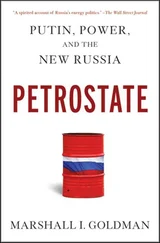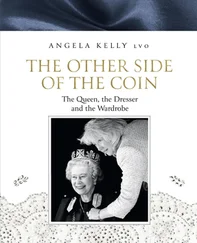The story was so sensitive and the climate so uncertain that Parkhomenko thought it was time to hide some of his research so the security services could not seize it if they attempted to target him. He was also contributing to Agence France-Press, so one day he went to the Moscow office of AFP with all the documentation and his records. There was a tiny room occupied by the bookkeeping office, and contributors’ files were stored there. Parkhomenko said he needed to examine his files and then hid all his records there for safekeeping. “I thought it very unlikely for someone to look for the documentation about the Presidential Security Service in the bookkeeping office of the AFP,” Parkhomenko sighed. [11] Sergei Parkhomenko, interview with authors, November 2014.
In late April 1995 Parkhomenko, increasingly frustrated, decided to approach the newspaper Moskovskie Novosti . It was located on Pushkin Square in the center of Moscow, with the newspaper’s title proudly emblazoned on the roof. The Russian-language weekly was launched as part of the propaganda effort around the Moscow Olympics in 1980, but during Gorbachev’s perestroika period, under editor Yegor Yakovlev, the weekly became an independent and vocal alternative to the official Soviet press. In the late 1980s Muscovites crowded every Wednesday around the stands by the entrance to the offices of Moskovskie Novosti , where pages of the weekly were displayed to read and discuss the latest edition. In the mid-1990s its predominance faded, but the paper remained a respected voice, with strong democratic traditions.
Parkhomenko went directly to the second floor, to the office of the editor Viktor Loshak, and brought his story with him. [12] Mikhail Shevelev (chief of the political department at the time), interview with authors, October 2014.
Loshak read the story and at once summoned his deputies. [13] Ibid.
They, in turn, read the story, and the paper didn’t hesitate: Parkhomenko’s story was made up in pages, now of Moskovskie Novosti design, and this time it was published. But because it was huge, the investigation came out as a two-part series, called “Merlin’s Tower.” [14] Sergei Parkhomenko, “Bashnya Merlina” [Merlin’s Tower], Moscow News , April 25, May 3, 1995.
Parkhomenko’s investigation exposed—in a way the public had never seen before—the fearsome atmosphere in the offices where power was held in Russia, including the White House, the Kremlin, and Staraya Ploshad, where the presidential administration was headquartered. In his story Parkhomenko described how presidential advisers conducted sensitive conversations by exchanging notes on scraps of paper, which they quickly burned, fearful that their offices were bugged by the Presidential Security Service. Parkhomenko described how he was forced to keep walking briskly with his highly placed contacts when in these corridors of power because the officials were certain the Korzhakov service could not switch the microphones so quickly. Only a few years since the death of the KGB and the Soviet police state, paranoia was rampant among high-placed bureaucrats. “When one official showed me to his office he took two pencils and put them in a keyhole of a big safe in the corner. He appeared to be certain there was a video camera inside,” Parkhomenko wrote.
The publication of “Merlin’s Tower” marked an important turning point, revealing the extent to which Yeltsin had begun to rely on people and organizations of the security services. Memories of the Soviet Union were still fresh, and the idea that surveillance and eavesdropping was again being deployed in the new, more democratic environment was deeply unsettling.
Korzhakov met the articles with silence, Parkhomenko went back to the bookkeeping offices of AFP and retrieved his research files, and after his reelection triumph in 1996, Yeltsin fired Korzhakov. Although this removed one figure from the palace intrigues, the jockeying for power never ceased. Yeltsin, struggling with health issues and alcoholism, was still surrounded by family, staff, oligarchs, and politicians who pulled him in every direction. Nonetheless, Yeltsin’s 1996 reelection victory seemed to bar a return to the totalitarian Soviet past. A period of optimism prevailed.
These were the months when we first walked through the doors of the newspaper Segodnya as reporters. Andrei was twenty years old, Irina twenty-one. We thought it was the best thing that ever happened in our lives. We knew that Gusinsky, the powerful media magnate, owned Segodnya and modeled it after the New York Times , bringing in very influential political journalists, including Parkhomenko, Mikhail Leontiev, Tatyana Malkina, and Olga Romanova. Romanova, in her late twenties then, amazed everybody with her speed and precision; she rushed in the room, had all stories for the economics page edited in two hours, wrote her own story, made a dozen calls, and then rushed out to meetings.
The newspaper had the best culture department in town. The offices on Leningradsky Highway occupied part of the building of the Moscow Aviation Institute. We saw it as a gateway to the new, modern, and Westernized world. The walls were painted white, and the tables were black with sleek Macintosh computers on them, a striking contrast to Soviet-style offices of other Moscow newspapers, which had faded, wood-paneled walls, slamming metal doors, and pneumatic tubes for delivering typewritten articles. Irina joined the paper three months before Andrei, and by the time Andrei arrived, she had already written critically about municipal policy under Moscow’s powerful mayor, Yuri Luzhkov.
Many of the journalists were young like us. The head of Andrei’s department was Andrei Grigoriev, who, at twenty-six years old, was considered an experienced journalist. He exposed the vulnerability of prominent banks and was sent for a few months to Europe because the editors thought his life was in danger. Both of us felt the excitement—and a sense that we almost missed the last train—about reading courageous dispatches from the Chechen war by Masha Eismont, who was then twenty-one years old.
Rossiyskaya Gazeta , a newspaper owned by the government, had also approached Andrei. He decided to talk to them. A stiff and officious deputy editor, a woman in her fifties, told him about what kind of future he could expect at there, that after three years he could expect to be given a special press card with the words “Administration of the President” on it, which, she said, would make him very proud. She didn’t mention the topic he would be reporting on, saying he would be attached to the city news section. It was such a striking contrast to Segodnya , where Andrei immediately was given a topic for reporting—information technology—and told he was to cover it alone. Andrei felt excited: it basically meant he could define the policy of such an influential daily newspaper on this burgeoning subject. (Though his father was not particularly thrilled and told him “to leave his field” after reading a critical article Andrei wrote on FAPSI. After that they didn’t talk to each other for a few months.)
Being a journalist in the mid-nineties not only offered the thrill of the work but also changed one’s social status. In a few months our monthly salaries reached $600, way higher than Irina’s parents’ at that time. Young and with no family obligations, journalists filled just-opened bars in Moscow, drinking and talking only about their profession. One day someone brought the Reuters guidelines for journalism to Jack Rabbit Slim’s pub—conveniently located next door to the offices of a competing daily Kommersant —and provoked all-night talk about Western versus Russian rules of journalism.
Читать дальше












